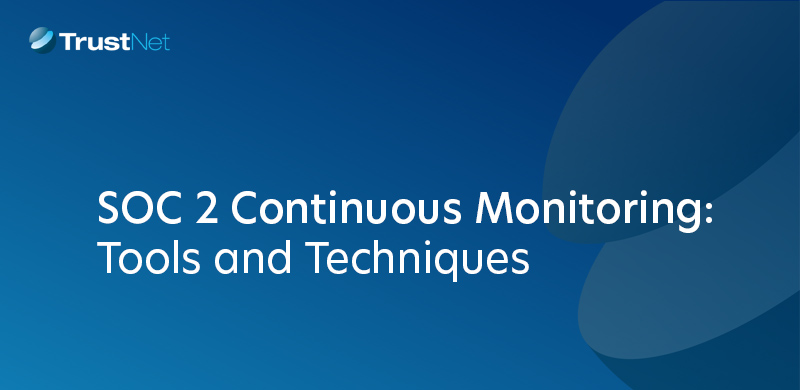The Human Factor: Why Cybersecurity Awareness Training is Your First Line of Defense

About 68% of breaches in 2024 were caused by human factors, such as errors in judgment, falling for phishing schemes, or succumbing to social engineering. These incidents reveal a fundamental weakness in most organizations: the human factor in cybersecurity.
No matter how advanced your defenses are, employees remain a potential vulnerability. Cyber attackers know this and often exploit lapses in awareness or training to gain access to sensitive information.
This is how cybersecurity awareness training becomes critical. By educating employees on how to identify and respond to attacks, organizations empower their workforce to become the first line of defense. Employees can shift from being a weakness to a valuable asset when properly equipped with knowledge and skills.
Why invest more in training now?
-
- The biggest contributor to data breaches continues to be human error.
- Customized instruction increases knowledge of social engineering and phishing.
- Employee education aids in integrating security into day-to-day operations.
More than just lowering cyber incidents, cybersecurity awareness training fosters a proactive culture where employees are integral to the organization’s security. Organizations strengthen their resilience and create a more secure, mindful atmosphere for everyone by addressing the human element in cybersecurity.
The Human Factor: Understanding the Risk
Even with the most advanced security technologies, human error in cybersecurity continues to be a major vulnerability. Employees often become unintentional gateways for cyber threats, underscoring the need to address this human factor head-on.
How Employees Become Security Vulnerabilities
Employees can unknowingly create serious risks through common actions, such as:
-
- Clicking on phishing links. Phishing attempts deceive individuals into clicking malicious links or sharing sensitive credentials by mimicking legitimate senders.
- Falling victim to social engineering threats. Attackers use manipulation tactics, like impersonating trusted colleagues or authority figures, to coax employees into revealing confidential information or bypassing procedures.
- Improper password management. Reusing weak passwords or failing to implement multi-factor authentication increases exposure to attacks.
- Using unauthorized devices. Personal devices may lack proper cybersecurity measures, exposing networks to potential malware.
- Neglecting software updates. Outdated systems and applications often contain vulnerabilities that attackers can exploit.
The Role of Insider Threats
Internal risks add another layer of complexity to defending against breaches. Insider threats can be classified as follows:
-
- Malicious insiders. These individuals intentionally exploit their access to steal data or disrupt operations for personal or financial reasons.
- Accidental insiders. Well-intentioned staff can inadvertently mishandle sensitive information. Examples include sending documents to the wrong recipients or storing data on unsecured platforms.
Building Human-First Cybersecurity
To mitigate employee security risks, companies should focus on proactive measures such as comprehensive employee security education. Key components include:
-
- Training employees to identify phishing schemes and social engineering tactics.
- Promoting strong, unique passwords and implementing two-factor authentication.
- Establishing clear policies for handling sensitive data and devices.
- Providing regular, hands-on simulations to reinforce learning.
By addressing the human error in cybersecurity, organizations can transform their workforce into a powerful line of defense. Investing in employee training ensures not just compliance, but a vigilant, security-conscious culture that limits vulnerabilities.
For more info on our Security Awareness Training Platform, Click Here
The Cost of Ignorance
Failing to address cybersecurity risks can come at an extraordinary price. Cybersecurity breach costs are escalating, leaving unprepared organizations vulnerable not only to financial losses but also to long-term damage.
The Financial Toll
Data breaches have become alarmingly expensive. As of February 2024, the average cost of a single breach is .88 million. This figure reflects a wide range of expenses, including investigation, recovery, and lost productivity. But that’s just the beginning.
Other hidden costs include:
- Business interruption. Downtime caused by breaches disrupts operations and leads to revenue loss.
- Customer compensation. Breached organizations often face pressure to cover losses or offer restitution to affected clients.
Reputational Damage
The financial impact goes beyond immediate expenses. Reputation damage extends the consequences far beyond the initial breach.
- Loss of customer trust. Clients are reluctant to remain loyal to companies that fail to protect their personal data.
- Negative media attention. Publicized breaches lead to long-term brand erosion, discouraging new business opportunities.
Regulatory Penalties
Regulatory penalties for non-compliance add another layer of risk. Laws such as GDPR or CCPA hold firms accountable for safeguarding customer information. Non-compliance can result in severe fines, including multi-million-dollar settlements, along with legal consequences like class-action lawsuits.
Key Elements of Effective Cybersecurity Training
An effective cybersecurity training program equips employees with the knowledge they need to recognize and avoid potential cyber threats, bolstering your organization’s overall defense.
Key Topics to Cover
To build a well-rounded program, include these essential security awareness topics:
-
- Phishing awareness and detection. Train employees to recognize phishing emails, malicious links, and fraudulent messages. Incorporate phishing simulation exercises to test their skills in real-time scenarios.
- Password security training. Teach the importance of strong, unique passwords and recommend practices like multi-factor authentication (MFA). Guide employees on creating secure passwords and avoiding common pitfalls, such as reusing credentials.
- Data handling protocols. Provide guidance on handling sensitive information securely. This includes encrypting files, avoiding unsecured file sharing, and limiting access to critical data based on roles and responsibilities.
- Safe Internet practices. Educate employees on recognizing risky sites, avoiding unexpected downloads, and cautiously managing online behaviors that could expose the organization to threats.
Importance of Regular, Updated Training
Cyber threats constantly evolve, which means one-time training is insufficient. Cybersecurity training best practices emphasize the need for regular, ongoing sessions to address emerging risks. Frequent updates ensure employees stay informed about the latest threats and solutions, enhancing overall preparedness.
Make Training Interactive
Traditional training methods often fail to stick. Including interactive elements makes learning more engaging and memorable. Consider these approaches:
-
- Phishing simulation tests. Monitor how employees respond to realistic but fake phishing attempts. Use results to tailor additional training.
- Scenario-based exercises. Introduce real-world examples, like spotting suspicious links or responding to potential breaches, so employees know what to expect.
- Gamified learning. Incorporate games or quizzes to make lessons engaging and promote friendly competition.
By covering critical security awareness topics and keeping sessions adaptive and interactive, businesses empower their teams as the first line of defense against cyber threats.
Measuring the Impact of Cybersecurity Training
Investing in cybersecurity training is only the first step. To ensure its value, organizations must measure its impact.
Key Performance Indicators
To evaluate the effectiveness of training, focus on these measurable indicators:
-
- Phishing test success rates. Monitor how employees respond to phishing simulation exercises over time. A consistent decline in failures indicates increased awareness and vigilance.
- Incident response times. Faster response times during potential or actual breaches suggest improved incident response knowledge and confidence among employees.
- Number of reported threats. A rise in threat reporting often signals that employees are actively spotting suspicious activities and engaging in preventative measures.
- Reduction in security incidents. Track the overall number of breaches, policy violations, or unauthorized access events to measure the tangible impact of training on reducing breach risk.
Long-Term Benefits
Regular and effective training does more than improve short-term metrics, it leads to lasting cultural change.
-
- A culture of security awareness. Training fosters a workforce that instinctively prioritizes security, protecting sensitive data as second nature. Employees become proactive, reducing risks before external threats escalate.
- Financial and operational efficiency. By preventing costly breaches and improving company-wide response procedures, businesses save significant resources while boosting operational resilience.
The ROI of cybersecurity training emerges not only through measurable improvements but also from intangible benefits like team confidence and reputation protection.
Implementing a Successful Cybersecurity Awareness Program
Building a strong cybersecurity culture starts with a well-designed awareness program.
Steps to Create a Comprehensive Program
-
- Assess current gaps. Begin with evaluating current knowledge levels and vulnerabilities within the organization. Use this information to shape tailored training initiatives.
- Develop engaging content. Talk about significant topics, including phishing, password hygiene, and adhering to security policies. To keep people interested and involved, use interactive resources like exams, simulations, and real-world situations.
- Schedule regular refreshers. Continuous learning is key to staying ahead of evolving threats. Offer updated training resources and modules on a quarterly basis to keep content relevant.
- Track, measure, and improve. Use metrics like phishing test success rates and incident reporting to measure the program’s effectiveness. Incorporate feedback to refine and improve future sessions.
Leadership and Culture Integration
Strong programs rely on leadership buy-in. When leaders actively participate in and advocate for cybersecurity awareness, it reinforces its importance across the organization. Integrating these initiatives into daily operations — like reminding teams during meetings or embedding training into workflows — makes security a shared responsibility.
Human-Focused Security Measures
A human-centric security approach recognizes employees as both a risk and an asset. Empowering workers with the knowledge and skills to prevent threats creates a proactive security culture and ensures compliance at all levels.
TrustNet: Your Partner in Building Resilient Cybersecurity Culture
Nowadays, a successful awareness program isn’t optional — it’s essential. Organizations must act now to prioritize the importance of cybersecurity training. TrustNet is ready to assist you in building a customized program that fosters employee engagement in security while embedding cybersecurity culture into your operations.
Partner with TrustNet to build a robust cybersecurity culture, reduce risks, and empower your team with the skills they need to protect your business. Schedule a consultation with our experts today.
Subscribe to the TrustNet Newsletter
actionable cybersecurity strategies, and TrustNet’s cutting-edge solutions.




